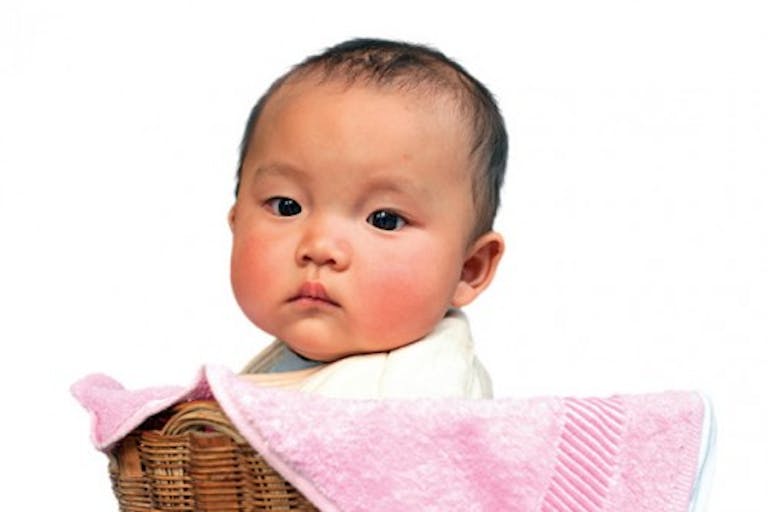
Thousands of South Korea schools close as birth rate plummets
Cassy Cooke
·
Analysis·By Rachael Denhollander
New regulation enforces China’s One Child Policy on eve of study revealing the extent of policy’s damage
While New Year’s Day traditions were being carried out the world over, on January 1, a much darker, much more insidious tradition was being reinforced the same day in the People’s Republic of China – the furthering of China’s One Child Policy.
While the rest of the world regards January 1 as a celebration of life and new beginnings, in China, January 1 marked the start of the Shenzhen Special Economic Zone Population and Family Planning Regulations, the first local law in China that imposes specific penalties on any family who leaves the mainland to birth a second child. The One Child Policy, officially translated as “Family Planning Policy,” provides an exception for couples who are living overseas during the birth of a second child, a technical loophole which has resulted in a recent phenomenon known as “birth tourism,” where wealthy families in China travel overseas to birth additional children. Until January 1.
China’s infamous regulation is a national law, but it is enforced at the provincial level, allowing the Shenzen Municipality to be the first to effectively say “enough is enough” to any family with the ability to make use of the exception. The new regulation specifically provides new penalties for any family giving birth to a second child outside China, while additionally banning the carrying or birthing of triplets, or the use of any reproductive technology to conceive additional children, even for families with an exception to the one-child rule. Under the new law, any family violating the policy must pay an excessive fine, equal to six times the city’s disposable income per capita in the year before the birth.
Anyone familiar with China’s One Child Policy also knows, however, that excessive fines may be the least of a family’s worries. Forced abortions, infanticide committed by doctors, and even infanticide carried out by the infant’s parents are common results of the brutal law.
It was just this past March that a picture of a newborn baby girl dying in a trash bucket sparked international fury – the newborn was a victim of forced abortion, but when the abortion failed and the newborn began to cry and move, she was thrown into the trash bucket, where she died at an unknown time thereafter. Barely four months later, the nearly lifeless body of another baby girl was discovered in the Liaoning Province, covered in blood from a two-inch gash in her throat. The newborn, placenta still attached, had been cut so deeply that her windpipe was exposed, then wrapped in a trash bag before being thrown into the dumpster – allegedly by her own parents hoping for an opportunity to try to conceive a son instead. In the wake of Shenzhen’s extension of China’s policy, concern ought to be raised that parents birthing a second child abroad will face consequences worse than the excessive fines spelled out in the law.
Ironically, the enforcement of Shenzhen’s regulation came barely a week before the release of groundbreaking research demonstrating the vast socioeconomic consequences of China’s policy. Just this past Friday, Monash University Professors Lisa Cameron and Lata Gangadharan, Australian National University Professor Xin Meng, and Associate Professor Nisvan Erkal from the University of Melbourne published a study entitled “Little Emperors: Behavioral Impacts of China’s One-Child Policy,” an extensive research project assessing the social and competitive behavioral attributes of children born under the One Child Policy.
Article continues below
Dear Reader,
In 2026, Live Action is heading straight where the battle is fiercest: college campuses.
We have a bold initiative to establish 100 Live Action campus chapters within the next year, and your partnership will make it a success!
Your support today will help train and equip young leaders, bring Live Action’s educational content into academic environments, host on-campus events and debates, and empower students to challenge the pro-abortion status quo with truth and compassion.
Invest in pro-life grassroots outreach and cultural formation with your QUADRUPLED year-end gift!
Using a series of economic games, the researchers examined more than 400 subjects growing up as only children under China’s One Child policy and compared the results against test subjects born just before the policy’s implementation. Considering and accounting for other factors such as age, education, and other variables, researchers found that strong differences emerged as a clear result of the policy.
Most noticeably, children growing up without siblings under the law were found to be significantly less trusting, less trustworthy, more risk-averse, less competitive, more pessimistic, and less conscientious. Contrary to previous assumptions, these detrimental effects were observed regardless of the amount of contact children had with peers and other family members, leading researchers to conclude that other social situations were “not a substitute for having siblings.” Concern has now been raised that these strong behavioral trends may have weighty economic implications, given that adults born under the policy were also less likely to be involved in self-employment or entrepreneurial jobs.
Yet there is no evidence that the consequences, or horrific brutality, resulting from China’s law have caused anyone in authority to rethink the regulation. On the contrary, Chinese authorities have boasted that the policy has prevented 400 million births from about 1979 to 2011. While some researchers have disputed the claim, if even a fraction of the estimate is accurate, the implications are staggering.
Couple the claimed “prevented births” with the World Health Organization’s allegation that more than 50 million women are estimated to be “missing” in China as a direct result of the institutionalized killing and neglect of girls, and the effect of the policy on human life becomes nearly unfathomable. Perhaps even more frightening is the recent survey which found that a full 76% of China’s citizens reportedly still support the regulations.
On this recent New Year’s Eve, a celebration of life and new beginnings, it would appear that neither gross human rights violations nor staggering economic impact is enough to stem the tide of horror that has been sweeping through China for more than thirty years. So much for new beginnings.
Live Action News is pro-life news and commentary from a pro-life perspective.
Contact editor@liveaction.org for questions, corrections, or if you are seeking permission to reprint any Live Action News content.
Guest Articles: To submit a guest article to Live Action News, email editor@liveaction.org with an attached Word document of 800-1000 words. Please also attach any photos relevant to your submission if applicable. If your submission is accepted for publication, you will be notified within three weeks. Guest articles are not compensated (see our Open License Agreement). Thank you for your interest in Live Action News!

Cassy Cooke
·
Analysis
Cassy Cooke
·
Analysis
Cassy Cooke
·
Analysis
Bridget Sielicki
·
Analysis
Cassy Cooke
·
Analysis
Cassy Cooke
·
International
Rachael Denhollander
·
International
Rachael Denhollander
·
Human Rights
Rachael Denhollander
·
Human Rights
Rachael Denhollander
·
Investigative
Rachael Denhollander
·